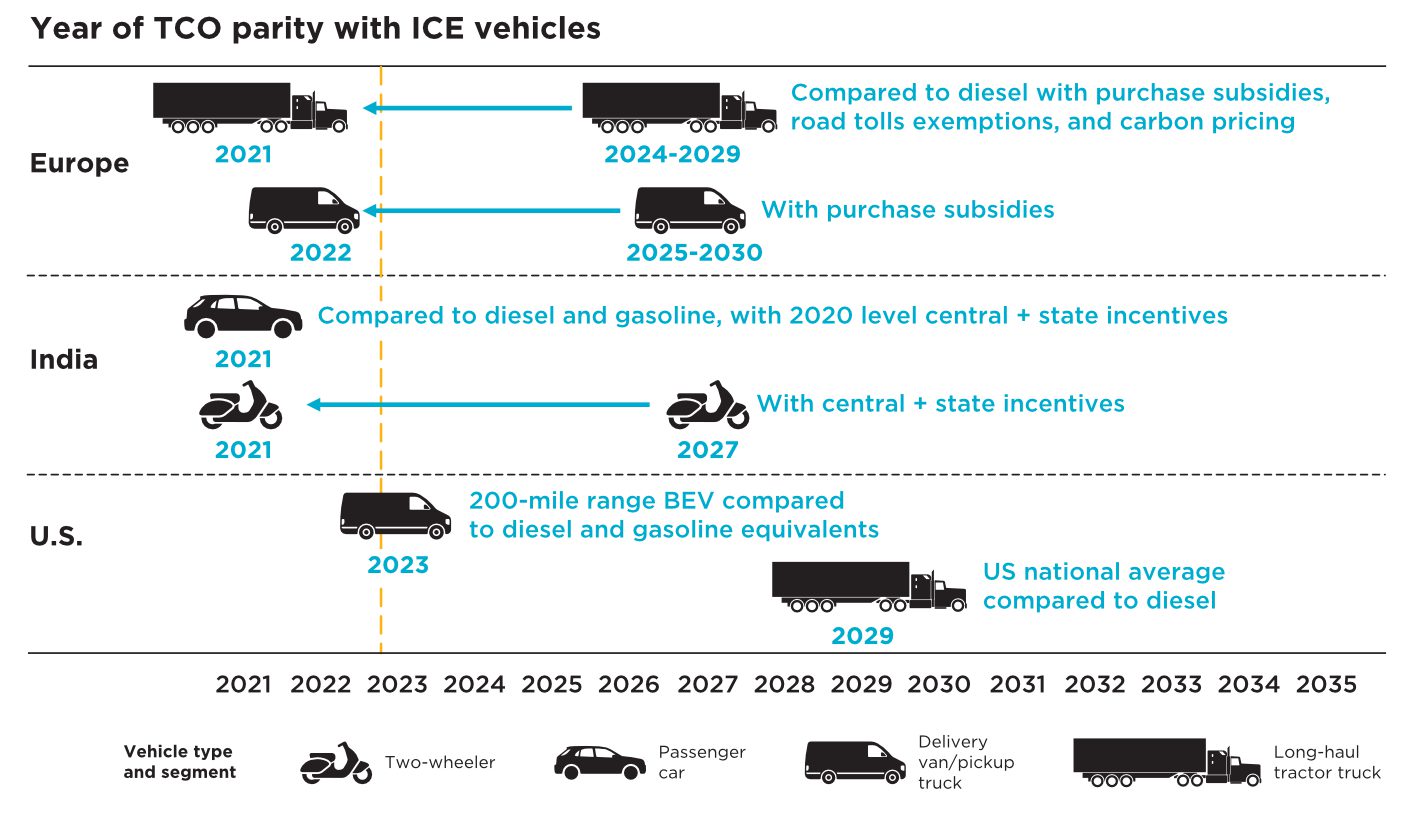Deploying charging infrastructure to support an accelerated transition to zero-emission vehicles
ZEVTC publication
Accelerating ZEV adoption in fleets to decarbonize road transportation
This briefing reviews the latest literature on the benefits of and opportunities for faster zero-emission vehicle (ZEV) transitions within fleets, and highlights the role of governments in supporting these transitions. The authors define fleets broadly to include a variety of vehicles used for commercial and public purposes—company cars, taxis, vans, delivery and ride-hailing vehicles, two- and three-wheelers, trucks, and buses—that are owned or operated by either governments, businesses, or individuals. Under this definition, vehicle fleets currently make up a quarter of vehicles on the road and almost two-thirds of greenhouse gas emissions from road transport globally.
The authors focused on technology cost and readiness, actions needed for charging infrastructure deployment, effective policy approaches, and emerging business models.
Primary takeaways include:
- An accelerated transition to zero-emission fleet vehicles can dramatically reduce global greenhouse gas emissions from road transport.
- ZEVs are already at or are quickly reaching technology readiness and commercial viability in ZEVTC member jurisdictions.
- Most ZEVs will soon be cheaper to own than internal combustion engine (ICE) vehicles, and some are already cheaper (see figure below).
- Fleet transition could catalyze the global ZEV transition.
- Effective policy approaches could enable both faster fleet transition to ZEVs and faster charging infrastructure deployment.

Figure. Summary of total cost of ownership analysis of battery electric vehicles from the ICCT.
